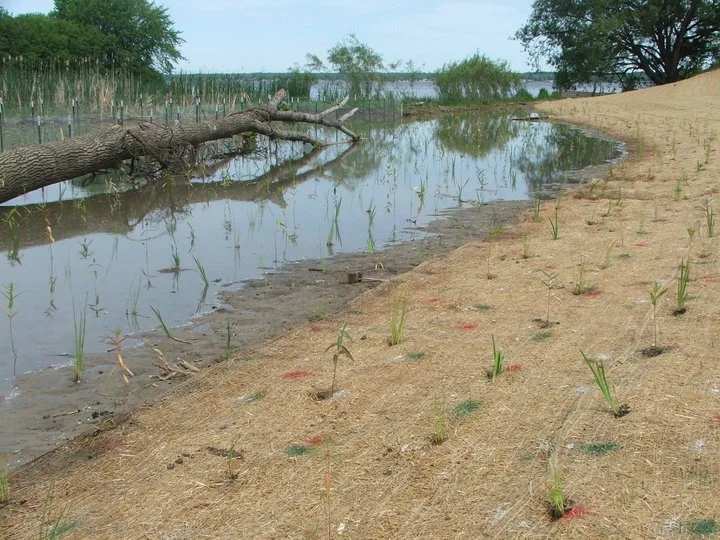Restoration of Michigan’s Muskegon Lake Benefiting Wildlife, Communities, Local Economy
Federal Great Lakes restoration funds restored two miles of shoreline and habitat along Muskegon Lakes, allowing fish, turtles, shorebirds and waterfowl to return. Economists estimate that the $10 million project will produce more than $66 million in economic benefits, a 6-to-1 return on investment.
Description
Sawmills and factories located around Muskegon Lake in the past dumped countless tons of wood, sawdust, concrete and other fill material in the lake to create new land. Those activities filled in 798 acres of shallow water wetlands in the lake, destroying valuable fish and wildlife habitat in one of the Great Lakes’ most ecologically diverse bays. About 74 percent of the lake’s shoreline was hardened with broken concrete, foundry slag, sheet metal, slab wood and other materials. The unnatural fill prevented public access to some parts of the lake, hurt fish and wildlife and hampered efforts to attract tourists and businesses to the area.
Resource Challenges Addressed
Polluted water
Aquatic habitat destroyed
Lake edge filled with debris and pollution
Location
Muskegon, Mich.
Approximate Cost
$10,000,000
Key Partners
Great Lakes Restoration Initiative, National Oceanic and Atmospheric Administration, Great Lakes Commission, West Michigan Shoreline Regional Development Commission, Grand Valley State University, Muskegon Lake Public Advisory Council and the Muskegon River Watershed Assembly
Types of Jobs Created
The project created 125 jobs. Among those hired were landscape architects, ecologists, biologists, excavators and truck drivers. According to economists at Grand Valley State University, the Muskegon Lake restoration project will generate: A $12 million increase in property values, up to $600,000 in new tax revenue annually, over $1 million in new recreational spending annually in Muskegon, 65,000 additional visitors annually, $66 million in economic benefits over ten years, and more than a 6-to-1 return on investment
MUSKEGON LAKE AREA OF CONCERN HABITAT RESTORATION
Shoreline restoration at Muskegon Lake has brought back habitat for fish, turtles, and birds. Credit: National Oceanic and Atmospheric Administration.
Results and Accomplishments
Fifty acres of wetlands were either restored or created by removing 182,826 cubic yards of unnatural fill (broken concrete, foundry slag, sheet metal and sawmill waste) from the south shore of the lake. Fish, turtles, shore birds and waterfowl have returned to parts of the lake that were previously uninhabitable. More people are now visiting the restored shoreline, which features a bike path and several decks where people can fish or watch wildlife. The project also created more than $15 million in economic benefits to the community, which is one of Michigan’s most economically depressed areas.

